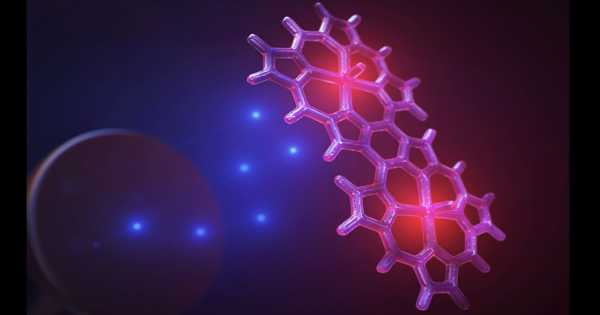In many markets around the world, clean energy technologies are now offering prices that are competitive with or better than traditional energy sources. In recent decades, clean energy technologies have advanced at an astounding rate. Despite significant progress, many people want to see more done to address today’s multifaceted global challenges, such as climate change mitigation, poverty reduction, environmental degradation, economic growth, and national security.
Researchers describe the use of porphyrins, which are ring-shaped molecules. These molecules, which are among the most abundant in nature, are known for their ability to accelerate or catalyze chemical reactions, including important reactions that occur in living systems.
Meeting society’s increasing energy demands has become a daunting task for humanity. Energy demand is expected to nearly double by 2050, while the effects of climate change, caused by the combustion of fossil fuels, are already wreaking havoc in the form of droughts, wildfires, floods, and other disasters.
Gary Moore, a researcher at the Biodesign Center for Applied Structural Discovery, believes that chemistry will play an important role in the development of clean energy solutions to the world’s mounting energy crisis.
Researchers describe the use of ring-shaped molecules known as porphyrins. Such molecules are noted for their ability to speed up or catalyze chemical reactions, including important reactions occurring in living systems.
Moore and his colleagues describe the use of ring-shaped molecules known as porphyrins in new research published on the cover of the journal ChemElectroChem. These molecules, which are among the most abundant in nature, are known for their ability to accelerate or catalyze chemical reactions, including important reactions that occur in living systems.
Clean energy technology is a critical tool for achieving clean energy substitution. China has developed a slew of innovations and applications in clean power generation and operation technologies, providing a strong impetus for large-scale clean energy exploration and integration.
Among these reactions is the conversion of solar radiant energy into chemical energy stored in molecular bonds, which plants and photosynthetic microbes use. Through the process of cellular respiration, this chemical energy can then be used to fuel the organism’s metabolism.

Moore and his colleagues hope to take a page from nature’s playbook by developing synthetic analogues to natural photosynthesis processes. The new research describes a synthetic diiron-containing porphyrin and investigates its potential as a catalyst. As they work to develop and advance technologies, clean energy researchers must maintain an understanding of changing global policy and market environments.
“Rather than exploitation of natural photosynthesis products, we can be inspired by our knowledge of photosynthesis to pioneer new materials and technologies with properties and capabilities that rival those of their biological counterparts,” Moore says.
Porphyrins and their structurally related analogs are abundant throughout the biological world. They bind a variety of metal ions to carry out various cellular functions. Chlorophyll molecules, for example, bind magnesium, a critical chemical stage in plant photosynthesis whereas heme, an iron-containing porphyrin aids in the organization of molecular oxygen and carbon-dioxide transport as well as the electron-transport chains required for cellular respiration. Porphyrin abnormalities are responsible for a variety of serious diseases due to their commanding role in life processes.
Porphyrins can also be used as catalysts in electrochemical cells, which are synthetic devices that convert chemical energy into electrical energy or vice versa. Although radiant energy from the sun can be stored in conventional types of batteries, such applications are limited due to their low energy densities when compared to modern transportation fuels.
Moore’s efforts to create artificial photosynthetic systems could be a valuable piece of the renewable energy puzzle, producing “non-fossil-based” fuels as well as a variety of useful commodities. Such devices would capture and store solar energy for use when and where it is needed, and they could be built with chemicals that are far less expensive and more abundant than the materials currently used in conventional solar energy applications.
Renewable energy sources and sustainable policy options, such as energy efficiency and energy conservation, can provide long-term solutions to key problems in developed, developing, and transition countries by providing clean, domestically available energy while decreasing reliance on fossil fuel imports and lowering greenhouse gas emissions.














